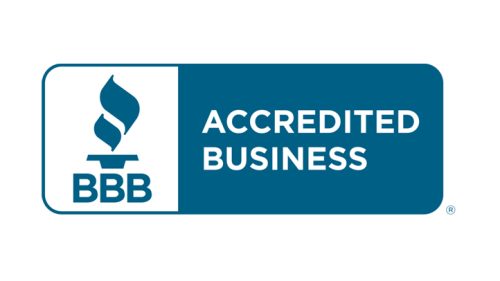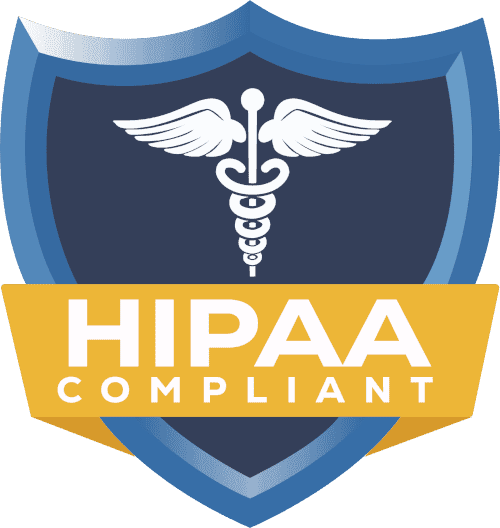Learn to Get Credentialed with Insurance Companies: A Clear Guide for Healthcare Providers

Credentialing with the insurance companies is regarded as one of the greatest measures that a healthcare provider can take, whether it be a physician, a nurse practitioner, a therapist, or a clinician who is launching his or her own business. It allows you to take insurance payments, increase your number of patients, and establish trust. This manual will indicate how to become credentialed by insurance companies. These steps will make you certain about what to do and what to expect.
Why Credentialing Matters
Before we start with the steps, let’s be clear on why credentialing matters:
- Without being credentialed, you cannot join many insurance networks. That means you might lose patients who want in-network care.
- You cannot get paid by insurers if you are not credentialed and enrolled with them.
- Credentialing is also a sign of credibility. These Insurance companies check your training, licenses, and history.
Step-by-Step Process
Here is a detailed, actionable path you can follow.
Step 1: Get Your NPI & Make Sure Licenses Are Valid
- If you don’t already have an NPI, go to the NPPES website and apply. It’s free.
- Once you get an NPI, keep the number in your records and document it in your application packages.
- Check your state license (medical, therapy, etc.). Make sure it is active and not expired.
- If your license is new or not yet issued, delay applying to payers until your license is official (some payers will hold your application until you have the final license).
This is a foundational step. No NPI and a valid license, no payer will accept your application.
Step 2: Prepare & Organize All Required Documents
Payers want you to provide straight, full-cut paperwork. The largest reason for delays is missing or incomplete paperwork.
Documents you need (commonly):
- Copy of State license (front and back, where applicable)
- Board or specialty certification.
- CV and contact details, dates, addresses, and work record.
- DEA certificate (assuming controlled substances prescription)
- Evidence of malpractice insurance (policy documents containing limits and effective dates)
- Photo ID/passport issued by the government.
- Any additional transcripts or certificates (e.g. medical school) required.
- Such state-specific documents (in other states, additional forms or state medical board forms)
Step 3: Establish and complete your CAQH ProView Profile.
Your profile is collected by CAQH ProView by many commercial insurers. This is an important step to save you from repeating tasks.
Steps to complete CAQH:
- Sign up as a provider with CAQH ProView (in case it is necessary).
- Enter your name, practice addresses, phone numbers, tax or business, education, work history, etc.
- Post authorized documents to CAQH.
- Pay attention to the attestation step: you need to check whether all the details are correct and sign.
- Other payers do not even look at your application unless you have a completed and attested CAQH profile.
Step 4: Submit Applications to Insurance Companies / Payers
Now you will apply to the specific payers (insurance companies) you want to join.
What to do:
- Find each payer’s provider application instructions or portal. Major payers include Blue Cross Blue Shield, Aetna, Cigna, UnitedHealthcare, Humana, etc.
- Use CAQH where accepted. Some payers will read your CAQH profile and ask you to confirm it.
- For Medicare, use PECOS. For Medicaid, follow your state’s Medicaid provider enrollment process.
- With each application, include all required documents from your organized file.
- Include a cover letter or checklist with your application. The cover letter lists what documents you submitted and their file names.
- Record the submission date, payer name, and a point of contact (if given).
Why this matters:
Having a cover letter and a checklist helps the payer’s reviewer. They see what you included and reduce the chance they mark something incomplete. Recording submission dates lets you track and follow up at the right time.
Step 5: Verification & Payer Review- Expect 90–120 Days
Once your application is in, the payer will run verification checks. This is often the longest delay period.
What happens during this phase:
- The payer will perform primary source verification: checking your license with the state board, verifying your malpractice insurance, confirming your employment history, etc.
- The payer might ask for extra documents if something is missing or unclear.
- Your CAQH profile may be used as a source for many of these checks.
- The payer is giving a verdict to accept or reject your application.
Typical timeline:
In the case of commercial payers, the norm is 90-120 days. Some payers can be quicker and those that can be slower. Medicare and Medicaid might take more time.
What you should do:
- Keep track of your application.
- Whenever the payer requests additional information or a clarification, respond immediately (on the same day or on the next business day).
- Note down conversations, emails, or reference numbers.
- Be courteous and insistent in your follow-ups.
Step 6: Contracting, Signing Agreements & Paneling
Once the payer credentials you, the second step is to contract and panel you as an in-network provider.
What to watch for:
- The insurer forwards you a participation agreement or the contract.
- Read and understand all terms: reimbursements, allowed amounts, rules of claims, termination, and directory listing.
- Negotiate terms (some payers will allow negotiation, which will depend on your specialty or demand).
- Sign and submit the contract within the deadline.
- Affirm your effective date – the date you can begin to bill as in-network.
- Ensure that your name and practice are reflected in the public directory of the payer. That lets patients find you.
- In-network claims to that payer can only be submitted once the contract is signed and is in effect.
Common Problems That Delay Credentialing
Knowing what goes wrong helps you avoid delays. Here are common pitfalls:
- Missing documents or low-quality scans
- Incomplete CAQH profile or no attestation
- Expired certificates or licenses
- Gaps or inconsistencies in employment history or CV
- Wrong or inconsistent names/addresses across documents
- Slow response to payer requests for more info
- Payer internal delays or backlogs
- Changes in address or practice location mid-process without updates
Each problem can add weeks or months. But it is good news as you can prevent most of them by preparing thoroughly and staying responsive.
Tips to Make Credentialing Faster & Smoother
These practical tips come from experience in real credentialing work (such as what Credex Healthcare does). They are not promises, but things you can control to reduce delay.
- Complete and fill CAQH first and attest. Many payers look there first.
- Assign documents clear file names. Makes it easier for payers.
- Place a cover letter with documents, indicating all you have added.
- Dedicate one employee to credentialing assignments and follow-up.
- Date tracking- keep track of when 30, 60, and 90 days have elapsed after submission.
- Act promptly on any request to provide extra documents by the payer.
- Make a call now and then, but insistently, when you do not receive any update in 60 to 90 days.
- Store a copy in hardcopy and an electronic copy.
- Create CAQH / payer portals in case of a change of your practice address, phone, or any other information throughout the process.
- The credentialing service or software is used to assist in tracking a large number of providers or a large number of payers.
These habits do not eliminate the wait, but they reduce errors and excuses for delay.
When to Consider Hiring a Credentialing Company (Like Credex Healthcare)
You may choose to outsource credentialing tasks. Here’s when and how it helps, and what to expect.
Reasons to outsource:
- You have many providers to credential at once.
- Your staff is already busy with clinical operations.
- You’ve experienced repeated delays, rejections, or errors.
- You want a specialist who knows the payer rules.
What a good credentialing company does:
- Helps gather your documents correctly.
- Completes CAQH and keeps it up to date.
- Submits applications to all desired payers.
- Tracks your application status.
- Follow up with payers when delays happen.
- Helps negotiate and review contracts.
- Ensures your directory listing becomes active.
What to watch out for:
- Fees: Understand how the company charges (flat fee, per provider, per payer).
- Security: You will share private documents (licenses, SSN, ID). Choose a trusted, secure firm.
- Communication: You should remain informed at every step.
- Contract conditions: The company is not to refuse to allow you to get in touch with payers in case of necessity.
Conclusion
Insurance credentials is one of the most important processes of a healthcare provider who needs to establish a sustainable healthcare practice. This is not a light thing, but it is simple, provided that you take the steps seriously.
- Ensure that your NPI and license are available.
- Converge and scan all the necessary documents.
- Make your CAQH ProView profile complete and attest.
- Apply to the commercial payers, Medicare (PECOS), and Medicaid.
- Anticipate 90 to 120 days of verification and review.
- Sign contracts and make sure your effective date.
One way to prevent delays is to be fast and timely, have your records well organized, and make every application. When the paperwork is too much or you are in a hurry, you can use the services of a credentialing firm such as Credex Healthcare.
FAQs
What is the time taken to complete credentialing?
An average of 90-120 days after a full application has been received by the insurer of many commercial insurers. Systems and states dependent on Medicare and Medicaid could be more difficult to depend on. Sluggish reaction to documents or delays in the delivery of documents are the reasons for the delay.
Can I accept patients prior to final credentialing?
Yes, you can see patients. However, you cannot make insurance a billing in-network provider until your credentialing and contracting are operational. Other practices address money to the patient directly or charge them out of network as they wait.
Is CAQH equivalent to credentialing?
CAQH ProView is a profile that numerous insurance companies have adopted to gather your information. Credentialing is the entire process of acceptance by payers to buy into their network. CAQH is a necessary component of that process.
What happens if one of the payers declines my application?
Ask for the reason in writing. Correct the particular problem (lost document, signature, or name does not match). Then reapply. Appeals can be made with the assistance of a credentialing firm.
Would it be better to hire a credentialing company or do it yourself?
When you have time, personnel, and industry to work with, doing the job yourself is cheaper. However, to minimize mistakes, make things faster, and enable your personnel to concentrate on patients, a credentialing company (such as Credex Healthcare) can pay off.



















